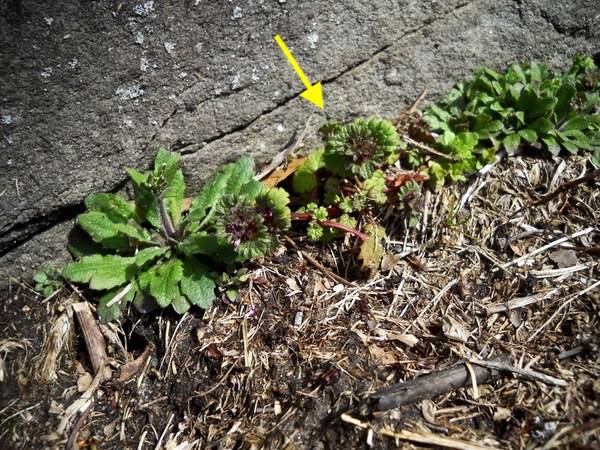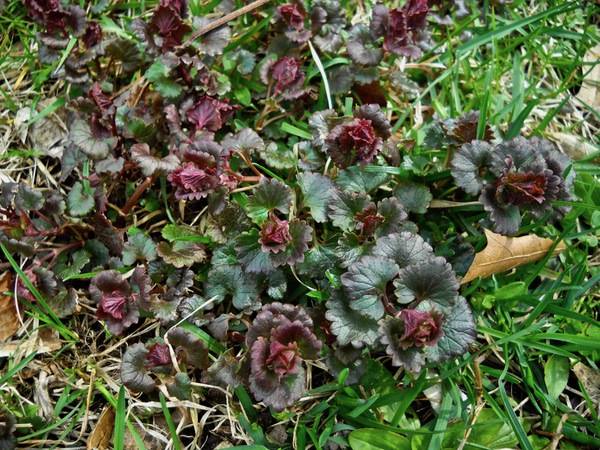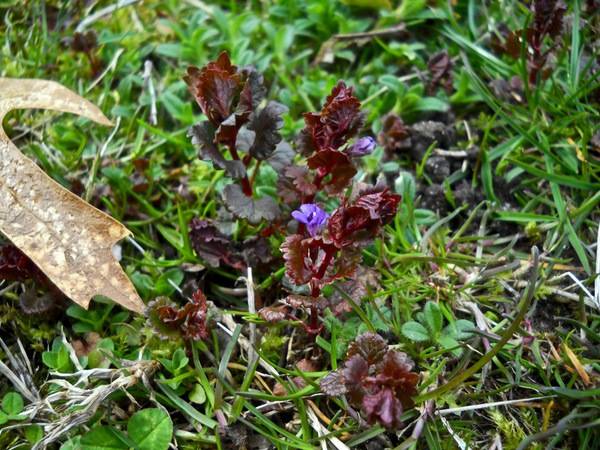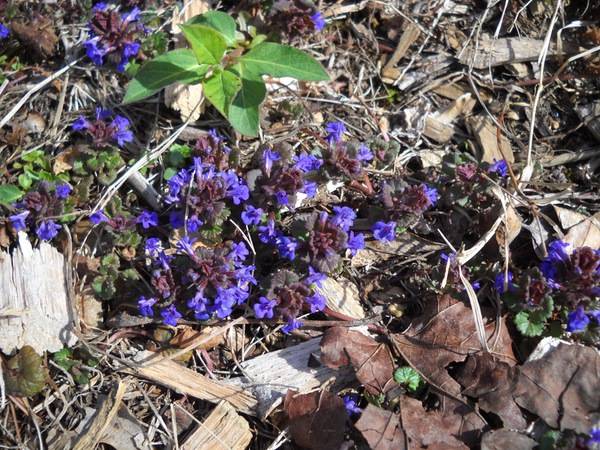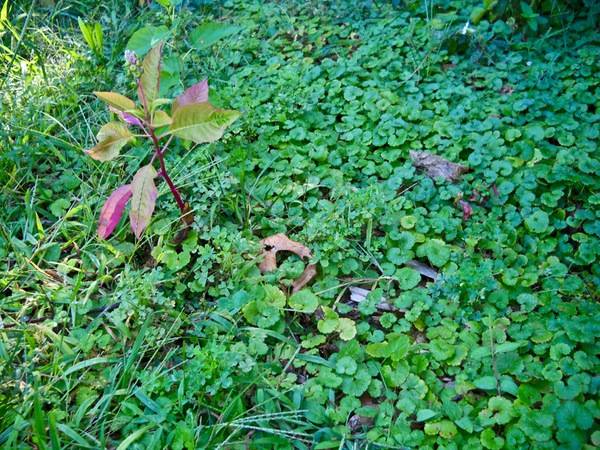Gill-over-the-ground
Gill-over-the-ground is a perennial evergreen creeper native to Europe. It has aromatic leaves and a square stem like many of the other members of the mint family. Its use as a salad green and as an ingredient in herbal medicine goes back to the Roman Empire. European settlers obviously regarded it highly since it was brought along as they colonized other continents. It is considered an aggressive weed by some, and grown as an ornamental ground cover by others.
It is not difficult to find this ground creeper at Salter grove as it thrives on the edge of mown areas. Since it overwinters as a rosette of leaves, phtosynthesizing all the while, it has the resources to be one of the earliest flowering plants in the park. The small, purplish pink flowers you see in early spring are likely to be from a patch of Gill-over-the-ground.
Pollinated flowers can produce up to 4 seeds that are simply dropped near the parent or may be carried further away by ants. New plants also develop when a part of the stem touches the ground and grows roots. Clonal patches can be several yards across.
The "Gill" in Gill-over-the ground does not refers to the respiratory organ of fishes but rather relates to its history in beer brewing. The gill was a historic unit of measurement equivalent to a quarter of a pint. Before hops was introduced in the late 1400's to brew beer, Gill-over-the-ground was used by the Saxons to brew ale.
Early settlers in North America used it to clarify beer as well as to prevent it from turning sour. The leaves were cooked as a vegetable or made into tea. Medicinally, it was used as an astringent, a diuretic, and as a tonic to stimulate appetite. It was also used to treat coughs with phlegm. Crushed fresh leaves were used to cure headaches, and their juice was applied to bruises and black eyes. It is rich in vitamin C and was thought to be beneficial as a hot drink for people with a cold.
For more information:
https://gobotany.nativeplanttrust.org/species/glechoma/hederacea/
https://en.wikipedia.org/wiki/Glechoma_hederacea
https://www.illinoiswildflowers.info/weeds/plants/ground_ivy.htm
https://www.friendsofthewildflowergarden.org/pages/plants/creepingcharlie.html
https://www.oardc.ohio-state.edu/weedguide/single_weed.php?id=58
Coon, N. (1979). Using Plants for Healing. Rodale Press. p. 114
Richardson, J. (1981). Wild edible plants of New England: A Field Guide: Including Poisonous Plants Often Encountered. DeLorme Pub. Co. pp. 87-87.
Seymour, T. (2020). Foraging New England: Edible Wild Food and Medicinal Plants from Maine to the Adirondacks to Long Island Sound. Falcon Guides. pp. 203-204.

